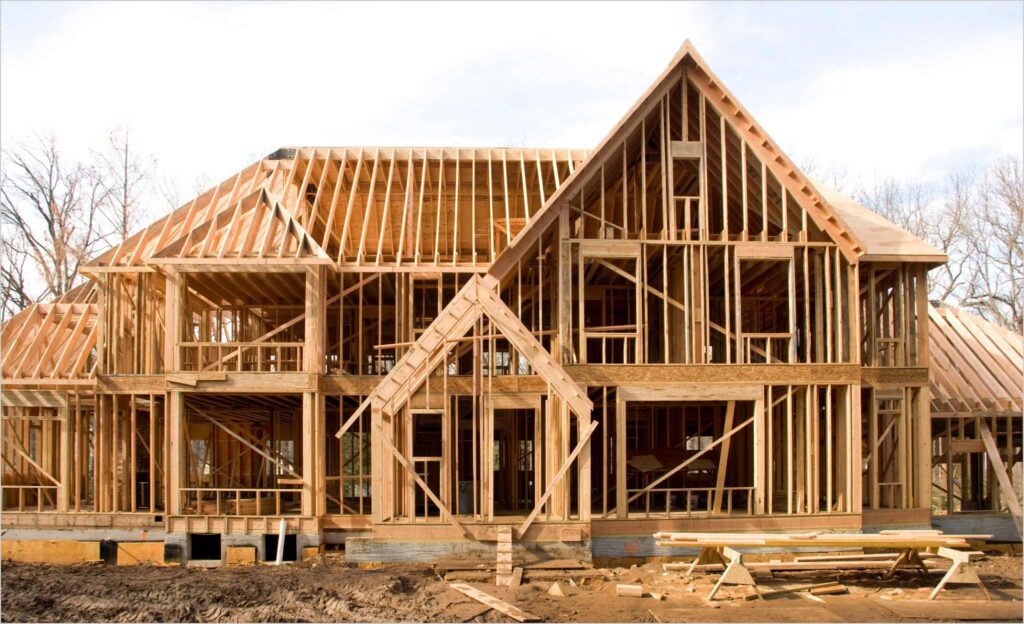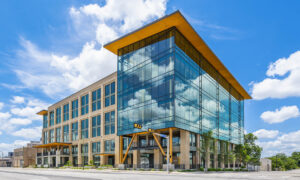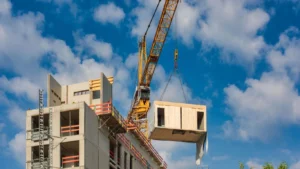
Wood-framed construction also known as timber framing is one of the most popular and cost-effective methods for residential and light commercial buildings. Combining natural sustainability, excellent insulation, and flexibility in design, wood-framed structures continue to dominate construction in North America, Europe, and parts of Asia.
What Is Wood-Framed Construction?
Wood-framed construction refers to a structural system where the skeleton of the building (walls, floors, and roofs) is made primarily from lumber or engineered wood products. These wooden elements studs, joists, rafters, and beams form the load-bearing frame that supports the building’s structure.
The two most common framing techniques are:
- Platform framing: Each floor is built as a separate platform. This is the standard for most modern houses.
- Balloon framing: Vertical studs run continuously from the foundation to the roof; rarely used today due to fire safety and handling difficulties.
Advantages of Wood-Framed Construction
- Cost-Effective:
Wood is affordable, lightweight, and easy to assemble, reducing both labor and material costs. - Sustainable & Renewable:
Sourced from managed forests, wood is a renewable material with a low carbon footprint. It stores carbon instead of emitting it. - Energy Efficiency:
The air pockets within wood structures provide natural insulation, improving energy performance and reducing heating or cooling costs. - Fast Construction Time:
Prefabricated wooden panels or frames can be quickly assembled on site, making project completion faster. - Design Flexibility:
Wood is versatile ideal for both traditional and modern architecture.

Challenges and Considerations
While wood-framed buildings offer many benefits, certain factors need attention:
- Moisture Control:
Wood is vulnerable to rot and mold if not properly sealed or ventilated. - Termite and Pest Resistance:
Use treated lumber and maintain regular inspections. - Fire Safety:
Implement fire-resistant sheathing and ensure compliance with local building codes. - Maintenance:
Periodic inspections and repainting can extend the life of wooden structures for decades.
Environmental Impact and Sustainability
Wood has one of the lowest embodied energy values among building materials. Unlike steel or concrete, it requires less processing energy and offers:
- Carbon sequestration – wood captures and stores CO₂ from the atmosphere.
- Biodegradability – wood can be recycled or decomposed naturally.
- Sustainable forestry – certified wood (FSC, PEFC) ensures responsible sourcing.
For green builders and eco-conscious homeowners, wood-framed construction represents a perfect balance between performance and environmental responsibility.
Best Practices for Building Wood-Framed Homes
- Use engineered wood products like LVL (Laminated Veneer Lumber) or CLT (Cross-Laminated Timber) for larger spans.
- Apply weather barriers, moisture membranes, and proper insulation between frames.
- Consider hybrid designs combining wood with steel or concrete for structural efficiency.
- Partner with certified contractors familiar with sustainable framing methods.
Wood-framed construction remains a cornerstone of modern architecture a system that blends sustainability, affordability, and timeless beauty. When built correctly, a wood-framed home can last generations while providing warmth, strength, and energy efficiency.






